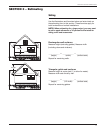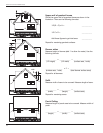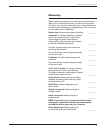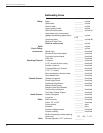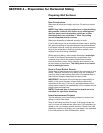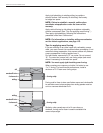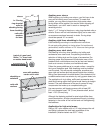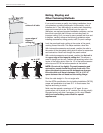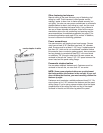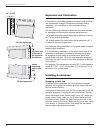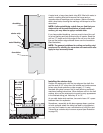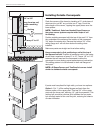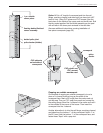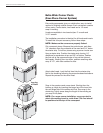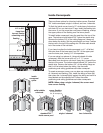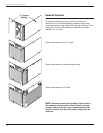
Other fastening techniques:
Manual nailing is the most common way of fastening vinyl
siding to a wall. That’s because it offers greater control,
making it easier to learn how to fasten panels securely, but
not tightly. You also can use power screwdrivers or pneumatic
staplers/nailers to attach vinyl siding to a wall, but you must
take the time to develop the proper skills. If you choose to
use one of these alternate techniques, follow all the recom-
mendations above for nail positioning and spacing and the
recommendations for substrate preparation on page 57 for
horizontal applications and page 65 for vertical. In addition,
be sure to observe the following guidelines:
Power screwdrivers
Use noncorrosive, self-tapping truss head screws. Screws
must have at least 5/16" diameter head and 1/8" diameter
shaft. Screws must be at least 1-1/8" long. If underlayment is
less than 3/4" thick and is not considered a nailable surface
(for example, foam or exterior grade gypsum), be sure screws
are long enough to penetrate at least 3/4" into wood studs
or substrate, 1/8" through a steel stud. Be sure screws are
centered in the nail slot. Leave 1/16"-1/8" space between the
screw head and the panel nailing flange.
Pneumatic staplers/nailers
Use corrosion-resistant fasteners only. Fasteners must be
centered in the nail slot, no more than 16" on center.
NOTE: Some power staplers/nailers use an attachment
that helps position the fastener in the nail slot. If your unit
does not have that feature, you must carefully position the
fastener by sight.
Fasteners must penetrate a nailable surface at least 3/4". Be
sure to leave up to 1/16" between the fastener and the panel
nailing flange. If you’re using a power stapler, drive the staple
perpendicular to the nailing slot with one leg of the staple
centered in the slot and the other leg above the panel.
center staples in slots
25
Wolverine Fit and Finish Installation Guide



